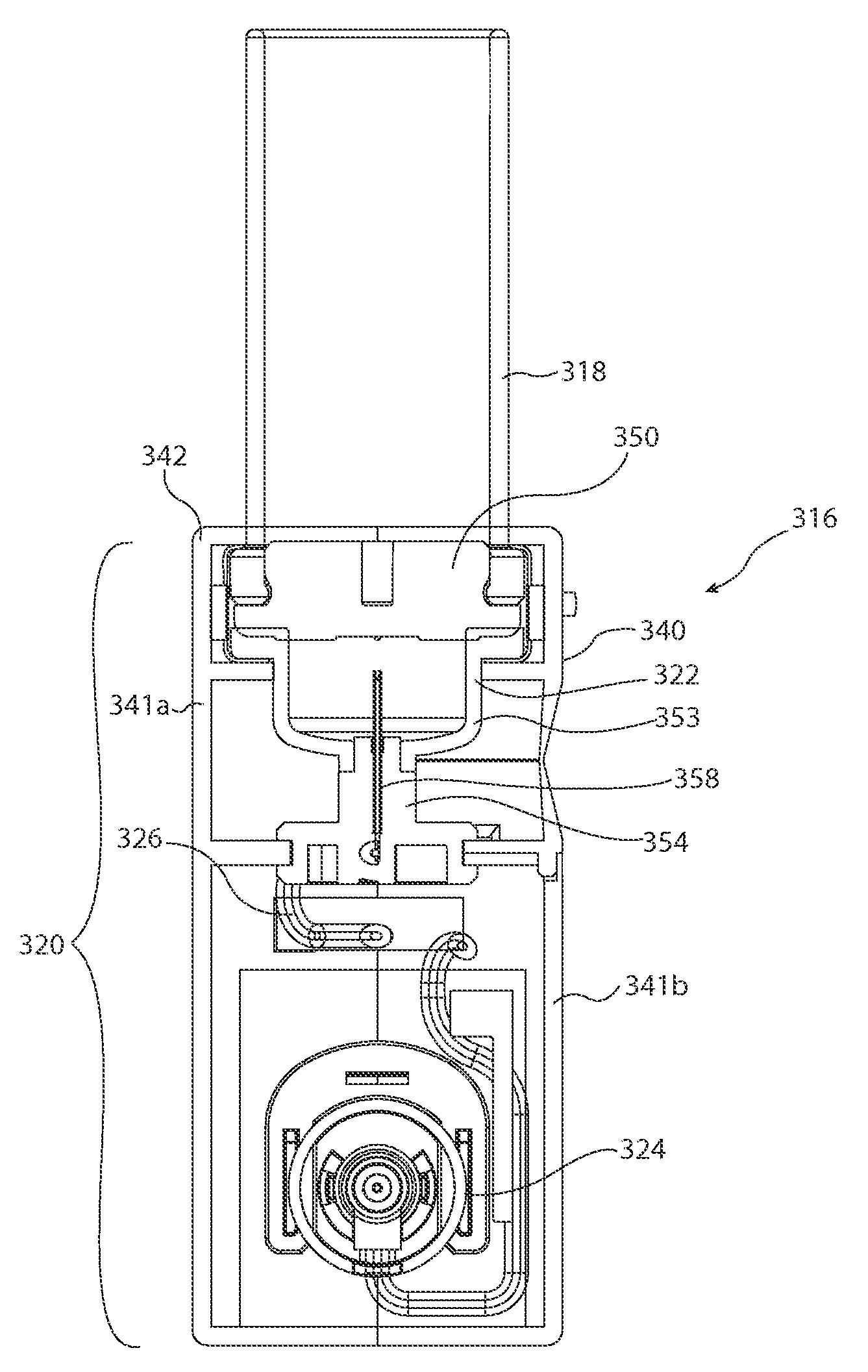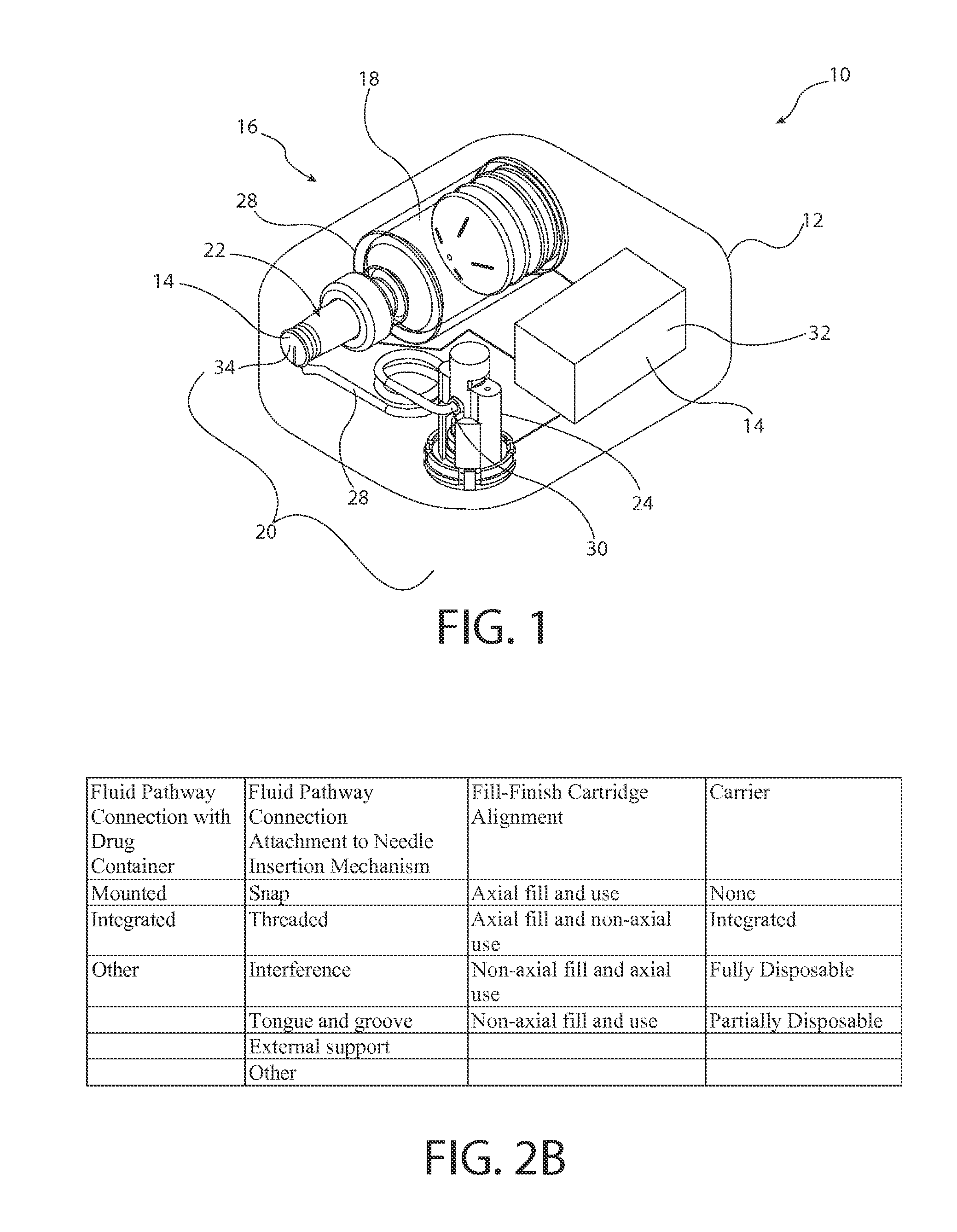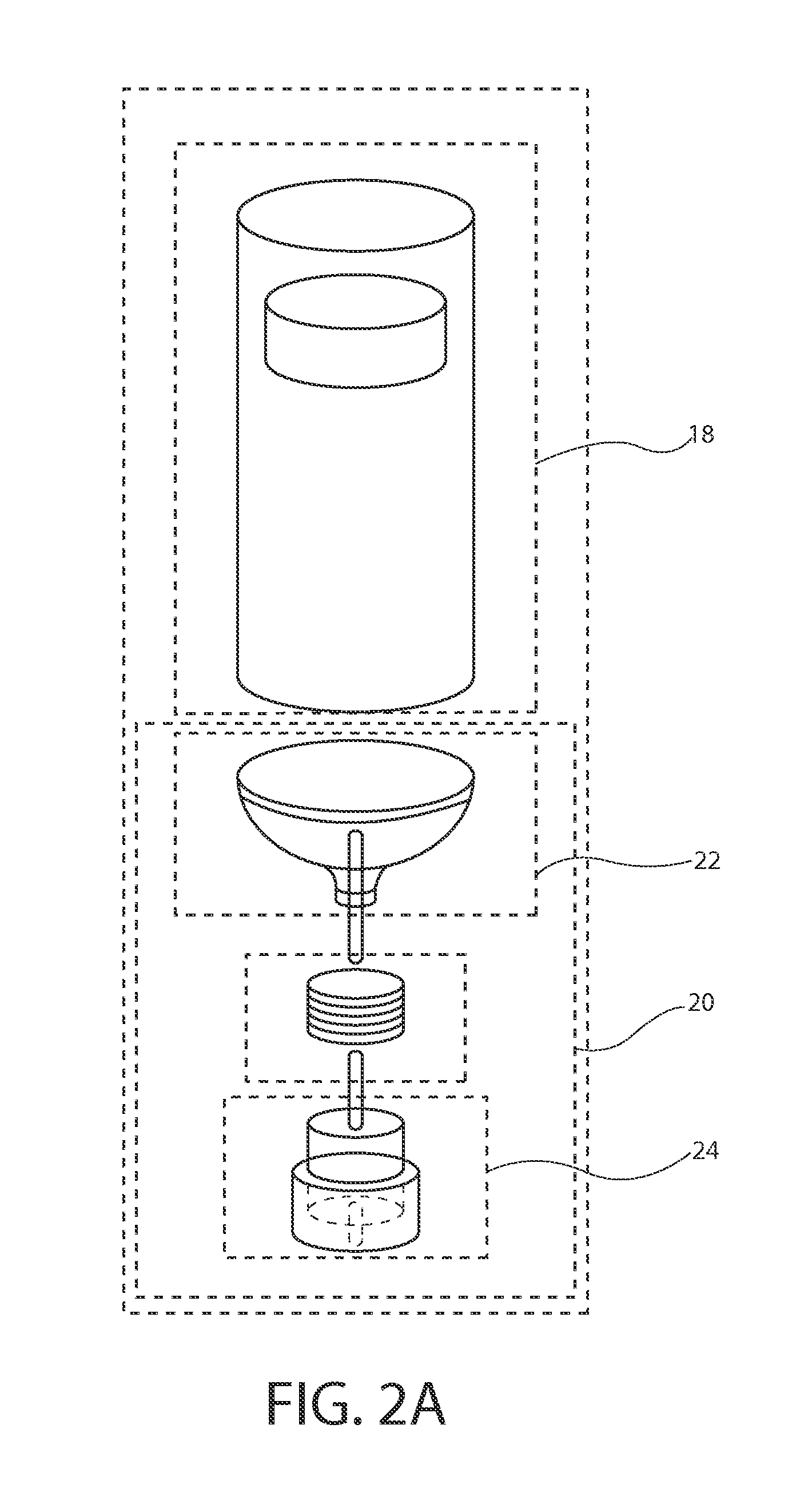Fill-finish cartridges for sterile fluid pathway assemblies and drug delivery devices incorporating fill-finish cartridges
a technology of sterile fluid and cartridges, which is applied in the field of sterile fluid pathway assemblies, can solve the problems of limiting the flow rate and profile of simple therapy, compromising the patient's mobility and lifestyle, and severely limited control of drug administration through transdermal patches, so as to maintain the sterility of the fluid pathway assemblies
- Summary
- Abstract
- Description
- Claims
- Application Information
AI Technical Summary
Benefits of technology
Problems solved by technology
Method used
Image
Examples
Embodiment Construction
[0045]The inventors of the present invention have developed sterile fluid pathway assemblies which can be utilized in drug delivery devices and which can be filled with pharmaceutical treatments using standard filling equipment and systems. This advantage is enabled by the novel fill-finish cartridges of the present invention which function to maintain the sterility of the fluid pathway assemblies and allow them to nest, mount, or otherwise be removably inserted into trays for standard fill-finish processes, as discussed further below. The embodiments of the present invention may be integrated into advanced drug delivery devices, such as injection and / or infusion pumps, which require sterile fluid pathways.
[0046]As used herein to describe the fluid pathway assemblies, fill-finish cartridges, drug delivery devices, or any of the relative positions of the components of the present invention, the terms “axial” or “axially” refer generally to a longitudinal axis “A” around which drug co...
PUM
| Property | Measurement | Unit |
|---|---|---|
| mechanical connection | aaaaa | aaaaa |
| mechanical | aaaaa | aaaaa |
| permeable | aaaaa | aaaaa |
Abstract
Description
Claims
Application Information
 Login to View More
Login to View More - R&D
- Intellectual Property
- Life Sciences
- Materials
- Tech Scout
- Unparalleled Data Quality
- Higher Quality Content
- 60% Fewer Hallucinations
Browse by: Latest US Patents, China's latest patents, Technical Efficacy Thesaurus, Application Domain, Technology Topic, Popular Technical Reports.
© 2025 PatSnap. All rights reserved.Legal|Privacy policy|Modern Slavery Act Transparency Statement|Sitemap|About US| Contact US: help@patsnap.com



